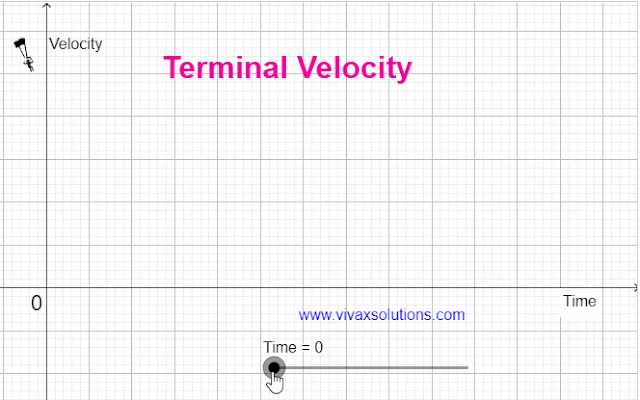When an object comes down under gravity in the air, it is subjected at least two forces, the weight - W - and the drag / air resistance - R.
The resultant force, F = W - R
F = ma
W - R = ma, where m and a are the mass of the object and the drag respectively.
As the object comes down, the drag, goes up as the latter is proportional to the speed at a given time. That means the acceleration goes down as well.
The slowing gradient of the above curve reflects that.
At a certain point, R becomes equal to W and the resultant force is zero.
That means, the acceleration becomes zero. The object in question now moves with a constant speed. It is called the terminal velocity.
This can be shown in a lab by dropping a lead ball into a tall cylinder that contains a viscous fluid such as glycerine.
When the ball moves through the same distance in equal times, it indicates the ball has reached its terminal velocity.
You can practise it here interactively:






0 comments:
Post a Comment